Growing a garden is a great way to add fresh food to your diet. But do you think of edible flowers when you plant your garden?
All too often, gardens can be limited to veggies like cucumbers, peppers, or tomatoes. We may also plant fruits like strawberries, raspberries, or blueberries.
If these fruits and veggies were all you chose to plant, you would get a great variety of delicious foods. But, there IS more you can add to your garden! Consider adding edible flowers.
Besides being great food for bees, edible flowers are the perfect way to add beauty to any meal.
Whether you use them as a garnish or as an ingredient, you won’t regret the results. Here are a few edible flowers to consider.
Top Edible Flowers to Grow
1. Begonias
Begonias have a somewhat sour, somewhat citrus taste. The flowers, stems, and leaves are all edible. The petals are wonderful as a colorful garnish or in a salad. Use the stems as a replacement for rhubarb.
Try topping a cake with whipped cream frosting with some of the petals for a beautiful treat.
Please note that individuals dealing with kidney stones, gout, or rheumatism can’t consume begonias raw due to the toxic acid they contain.
When planting begonias, they will need partial shade. They can be grown outdoors all year long in tropical climates, or brought indoors in cooler temps.
Begonias can be easily propagated by stem cuttings. They can also be propagated by leaf cuttings, allowing for more of this edible flower next year!
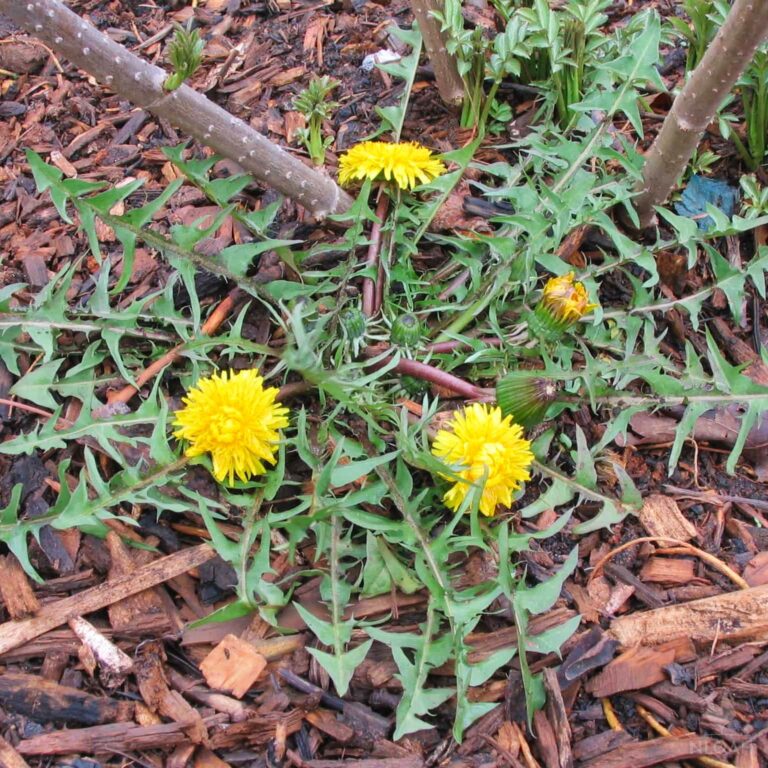
2. Dandelions
Many people are familiar with dandelion wine, but the uses for this edible flower don’t stop there. The unopened flower buds are very sweet with an almost honey-like flavor.
Commonly used in salads, the buds are good both raw and steamed. For best results, pick the buds closest to the ground.
Dandelions bloom in the Spring and early summer. The best time to collect the blossoms is when they are fully open and bright yellow.
The greens can be used in salads, soups, pastas and in green smoothies. They are most tender when they are young, but older greens can be eaten as well. Older greens may need to be sautéed or cooked to reduce toughness.
A few more things you can make with dandelions:
3. Garden Sorrel
Also called spinach dock, sorrel is an edible flower that has a light, lemony flavor. It’s a slender, herbaceous plant that can grow up to 24 inches high.
Sorrel often has deep roots and juicy stems. The leaves themselves are arrow shaped, and have a sour taste to them raw. Flowers will bloom in mid to late Summer.
Sorrel leaves taste great when added to sauces or summer dishes, like cucumber salad. This edible flower also makes an interesting topping for pizza. Sorrel is used worldwide in a number of culinary applications.
4. Pansies
A garden pansy is typically 2-3 inches in diameter. Two of the petals are slightly overlapping, with the bottom having a slight “beard”, coming from the middle of the flower’s center.
Petals can be white, yellow, purple or blue. When planting pansies, keep in mind that they need partial sun and well drained soils.
Pansy petals are mild in taste and are somewhat grassy in flavor. However, eating the whole flower allows you to experience more of a wintergreen taste. This edible flower is perfect for fruit salads and soups.
5. Scented Geraniums
The taste of geraniums depends on the varieties selected. These edible flower flavors range anywhere from lemony to spicy. Try sprinkling geranium petals over desserts or freezing them in ice cubes for a refreshing summer drink.
When planting geraniums, they will need partial shade to full sun. Geraniums will need at least 6-8 hours of sunlight in temps 65 and above to thrive.
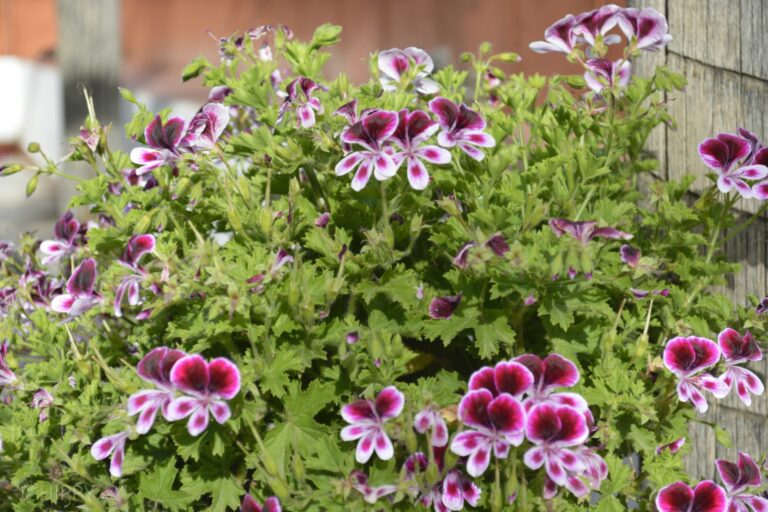
Soil should be well drained. Watering should be done at least weekly to keep soil moist, but not soaked.
Geraniums can be deadheaded, or the spent blooms pulled off, to keep them blooming all summer long. They can be brought inside in the winter to grow in a pot.
6. Sunflowers
These beauties are not just harvested for their seeds anymore! You may be surprised to learn that sunflowers taste similar to artichokes.
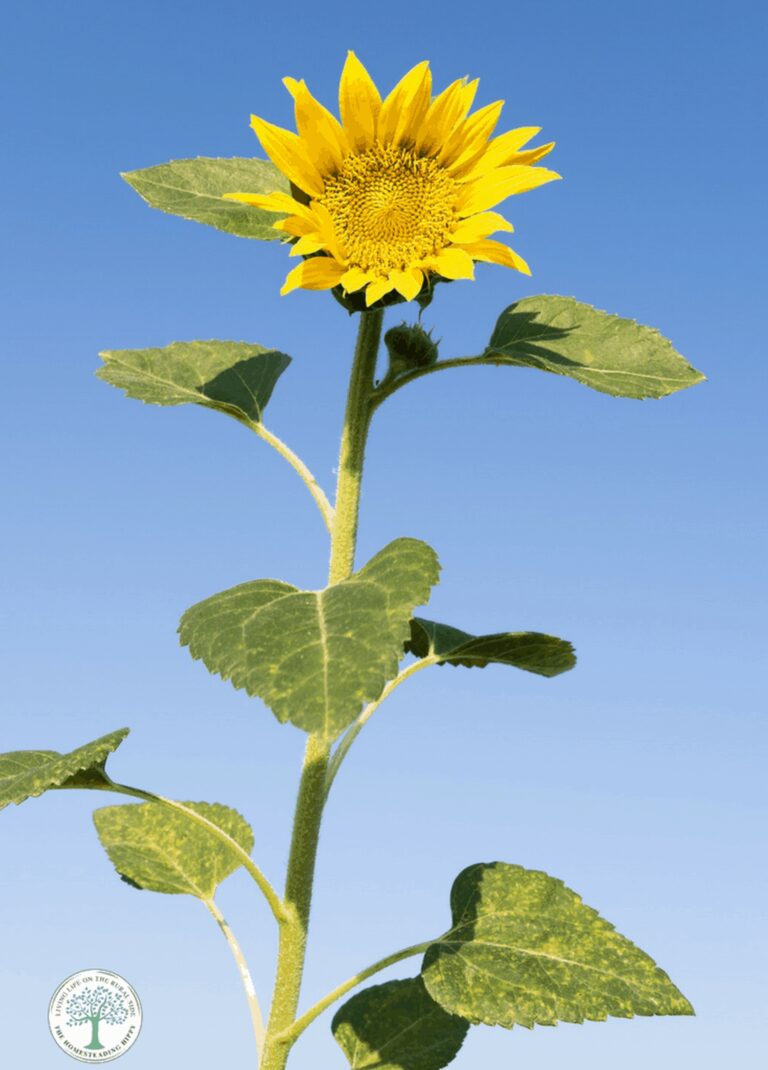
They are best when consumed at “bud stage.” Steaming the buds is the preferred cooking method. Once the flower opens, the flavor morphs to more bittersweet.
7. Calendula
This is a beautiful yellow to orange edible flower that is wonderful as a tea. Just pick the flowers at their peak, and dry them in a dehydrator to enjoy their goodness.
8. Nasturtiums
With a mild flavor similar to radishes, nasturtiums are the perfect complement to any salad. They can also be sprinkled into soups for a pleasing flavor. Try them stuffed or sautéed like spinach!
9. Magnolia
Magnolia flowers are not only beautiful, but they are also edible. The petals can be used to decorate salads, cheese, or deserts, and the flavor has been described as being similar to that of a cucumber.
10. Dahlia
Dahlias are one of the best edible flowers. They are rich in antioxidants and have a wide range of health benefits. The flowers are a good source of Vitamins A, C, and E.
They also contain potassium, calcium, and iron. Dahlias are known to improve digestion, boost immunity, and fight inflammation.
The flowers can be eaten raw or cooked. They can be used to decorate salads, sandwiches, and desserts. Dahlias can also be dried and used as tea.
11. Hibiscus
Hibiscus flowers are not only beautiful, but also delicious! They can be used to add a splash of color and flavor to salads, soups, and even desserts.
When selecting hibiscus flowers for eating, look for those that are brightly colored and have not yet begun to wilt. The petals are the most edible part of the flower, so be sure to remove the stamen and pistil before consuming.
Hibiscus flowers can be eaten raw, or they can be gently cooked in order to bring out their natural sweetness. Add them to your favorite recipes and enjoy their unique flavor!
12. Cape Jasmine
The Cape jasmine is a South African native that produces some of the most beautiful white flowers imaginable.
But these blossoms are not just lovely to look at – they are also edible! The petals can be added to salads or used as a garnish, and they have a delicate flavor that is reminiscent of jasmine tea.
Cape jasmine flowers are also sometimes candied or used to decorate cakes and other desserts. If you are lucky enough to have these blooms in your garden, be sure to enjoy them in all their forms – both visual and culinary!
13. Rose
While many people think of roses as nothing more than ornamental plants, the truth is that these flowering shrubs can also be a great addition to your culinary repertoire. Rose petals can be used to add a delicate flavor to salads, soups, and even desserts.
What’s more, they can also be candied or used as a garnish for cocktails and other drinks.
14. Honeysuckle
Honeysuckle is a common name for edible flowers in the Caprifoliaceae family. There are over 180 species in this family, and many of them are used as food.
Honeysuckle flowers are most commonly used in salads or as decoration on cakes and other desserts. The flowers can also be used to make honeysuckle syrup, which is a popular flavor for ice cream and other sweet treats.
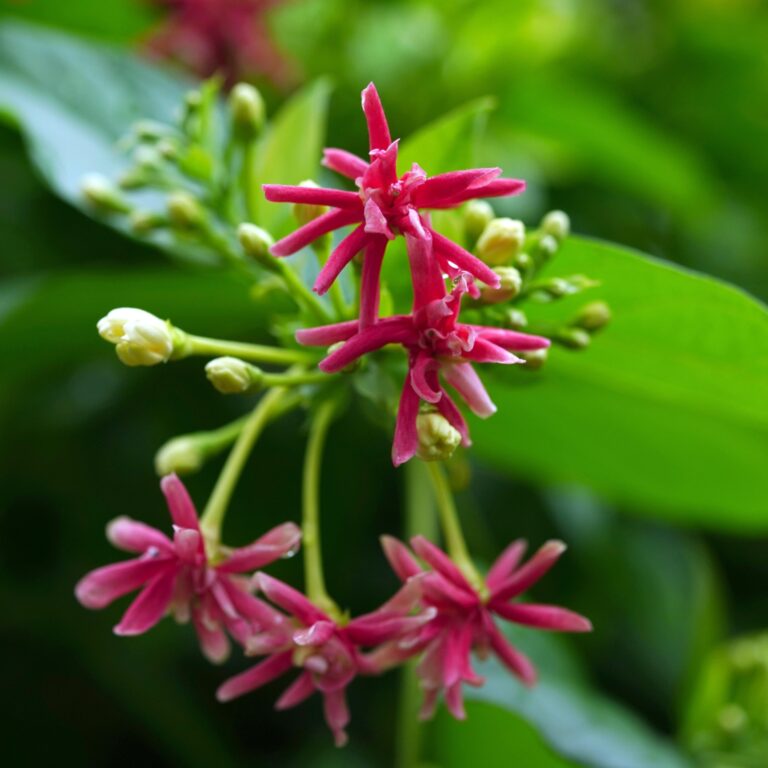
While the flavor of honeysuckle is most often described as sweet, it can also have hints of citrus or other fruits. If you’re looking for a unique flavor to add to your next meal, consider using honeysuckle flowers.
15. Coneflower
The cone flower, or echinacea, is a beautiful and versatile bloom that can add a touch of elegance to any dish.
Cone flowers are native to North America and have been used medicinally by indigenous peoples for centuries.
Today, they are widely available in supermarkets and farmers markets. When choosing cone flowers for cooking, look for blooms that are fresh and brightly colored. Avoid flowers that have wilted or browned petals.
To prepare the cone flowers for eating, gently rinse them under cool water and remove the green center cone. The petals can then be added to salads, soups, or grain dishes. Coneflowers can also be candied or made into preserves.
16. Forget Me Not
Forget-me-nots (Myosotis sylvatica) are one of the best edible flowers. They have a delicate flavor that is perfect for adding to salads or as a garnish.
The entire flower is edible, including the petals, stem, and leaves. Forget-me-nots can also be candied or used to make floral arrangements.
They are a member of the borage family and are native to Europe. The forget-me-not is the state flower of Alaska and is also the official flower of Nova Scotia.
The name forget-me-not comes from a German legend about a young man who was picking flowers for his lady love. He slipped and fell into a river and as he drowned, he shouted “Forget me not!”
17. Lilac
Lilacs are beautiful flowers that can also be used in culinary dishes. The petals have a lovely flavor that is reminiscent of lavender. They can be used to garnish salads, cocktails, or desserts.
Lilacs can also be candied or used to make syrups and jellies. When using lilacs in cooking, it is best to choose younger blooms that have not yet fully opened.
The flowers should be rinsed thoroughly and then gently patted dry. It is important to remove the pistils and stamens from the center of the flower before using, as they can impart a bitter flavor.
Lilacs are a delicate ingredient, so it is best to add them near the end of the cooking process. With their lovely flavor and beautiful color, lilacs make a wonderful addition to any dish.
18. Hollyhock
While many people think of hollyhocks as simply ornamental plants, they are actually edible flowers that can add a splash of color to salads or desserts.
The petals have a slightly sweet flavor with hints of almond, making them a perfect addition to baked goods or fruit salads. Hollyhocks can also be candied or used to decorate cakes and other desserts.
In addition to their culinary uses, hollyhocks have a long history of medicinal use. In traditional Chinese medicine, hollyhock is used to treat digestive disorders and skin rashes. Today, hollyhock is sometimes used in natural remedies for sore throats or colds.
19. Camellia
The Camellia sinensis plant is native to Asia and is the primary source of tea. The plant produces small white flowers with a light, sweet fragrance.
While the flowers are not typically eaten, they can be used to add flavor and color to salads, soups, and other dishes. Camellias are also a popular choice for dried flower arrangements.
The blooms can be air-dried or preserved in silica gel to retain their color and shape. When selecting camellias for drying, look for flowers that are fully open and free of blemishes. Keep in mind that the flowers will shrink slightly as they dry.
For best results, dry camellias in a dark, cool location. Avoid exposure to direct sunlight or excessive heat, as this can cause the flowers to fade.
20. Fuchsia
Fuchsia is a genus of flowering plants that consists of approximately 110 species. The majority of fuchsia species are native to Central and South America, but a few are found in New Zealand, Tahiti, and Spain.
Fuchsias are popular ornamental plants, and their flowers come in a variety of colors, including pink, purple, red, and white.
Many species of fuchsia are also edible, and their flowers can add a splash of color to salads, desserts, and other dishes. The flavor of fuchsia flowers varies depending on the species, but most have a light, sweet taste.
When selecting edible fuchsia flowers, look for those that are free of pesticides and herbicides. Also be sure to harvest the flowers before they start to fade.
21. Freesia
Freesia is a genus of about 25 species of flowering plants in the family Iridaceae. They are native to Africa, mainly South Africa, and are widely cultivated as ornamental plants in many regions of the world.
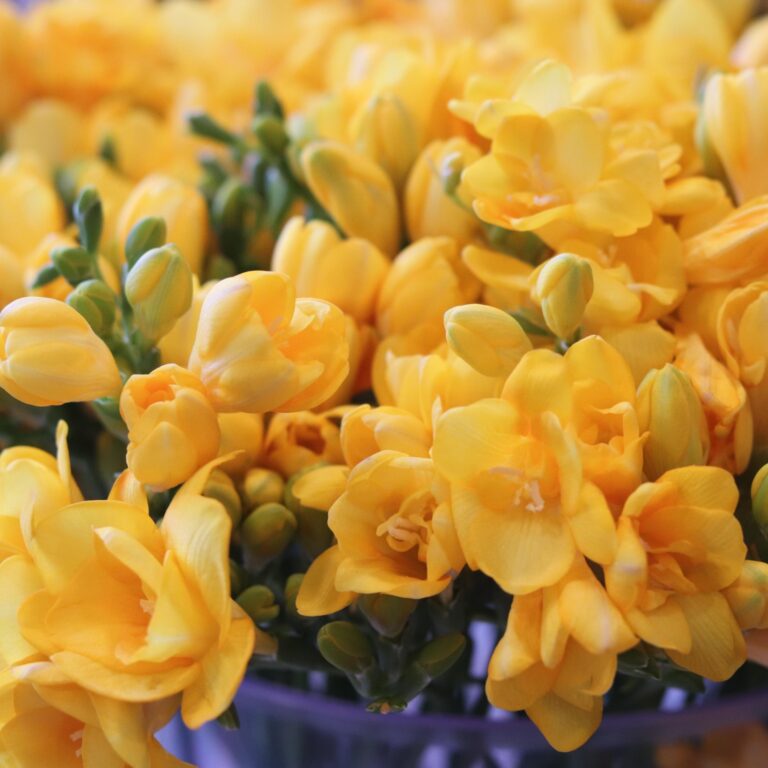
The flowers are used in a wide range of bouquets and arrangements, and they are also a popular choice for drying and pressing.
While most freesias have a strong sweet fragrance, some varieties have little or no scent. The flowers come in a wide range of colors, including white, yellow, pink, red, purple, and blue. They make a fantastic addition to desserts and teas!
22. Gladiolus
The Gladiolus has a long, slender stem with large blooms that come in a variety of colors, including white, yellow, pink, purple, and red.
When selecting edible flowers, look for those that are unsprayed and have not been treated with chemicals.
You can typically find these at farmers markets or specialty food stores. Be sure to wash the flowers thoroughly before eating them. It’s also a good idea to remove the stamen and pistils from the center of the flower, as they can be bitter.
Once you’ve prepared your edible flowers, you can add them to salads, use them as a garnish on desserts or cocktails, or even use them in stir-fries or rice dishes.
23. Peony
Peonies are a type of flower that is known for its beauty and it’s delicious flavor. While peonies are typically used as decoration, they can also be eaten. Peonies have a delicate flavor that is similar to other flowers, such as roses.
To enjoy the best flavor, peonies should be picked early in the morning when the petals are still closed.
They can be added to salads, used as a garnish, or even made into jam. In addition to their flavor, peonies are also a good source of vitamins and minerals.
25. Pinks
Though small, pinks pack a powerful flavor that can add a touch of sweetness to any dish. These versatile flowers can be used in sweet or savory dishes, and their petals can be candied or used to make syrup.
Pinks are also a beautiful addition to salads, desserts, and cocktails. When choosing pinks for cooking, look for flowers that are fresh and have not been treated with pesticides. Be sure to wash the flowers thoroughly before using them.
To get the most flavor out of pinks, infuse them in oil or vinegar, or steep them in water to make tea. experiment with different flavors and combinations to find the perfect match for your dish.
26. Violas
Violas are among the best edible flowers. Their delicate flavor is a perfect addition to salads, and they can also be used to decorate cakes and cupcakes.
Furthermore, violas are exceptionally easy to grow, and they will bloom throughout the spring and summer months.
27. Marigolds
Marigolds are one of the best edible flowers. They have a high antioxidants level which helps to improve overall health. They can be used in salads, as a decoration on cakes or cupcakes, or eaten whole.
Marigolds are also known to have anti-inflammatory properties, which can help to reduce soreness and swelling. In addition, they can help to boost the immune system and protect against infection.
For these reasons, marigolds are a great addition to any diet. When purchasing marigolds, look for flowers that are brightly colored and free of blemishes.
Avoid those that look wilted or faded, as they will not be as fresh or flavorful. Store marigolds in a cool, dry place until you are ready to use them. With proper care, they will stay fresh for several days.
28. Chives
When it comes to edible flowers, chives (Allium schoenoprasum) are one of the best options. They have a delicate onion flavor that can enhance a wide variety of dishes, from salads to soups. Chive blossoms are also very pretty, adding a splash of color to any dish.
In addition to being delicious, chives are also very easy to grow. They require very little care and can even be grown in pots.
29. Chamomile
Chamomile (Matricaria chamomilla) is an annual herb in the daisy family that produces small, white flowers with yellow centers.
Chamomile has a long history of use as a medicinal herb, and its flowers are edible and can be used to add a subtle flavor to food.
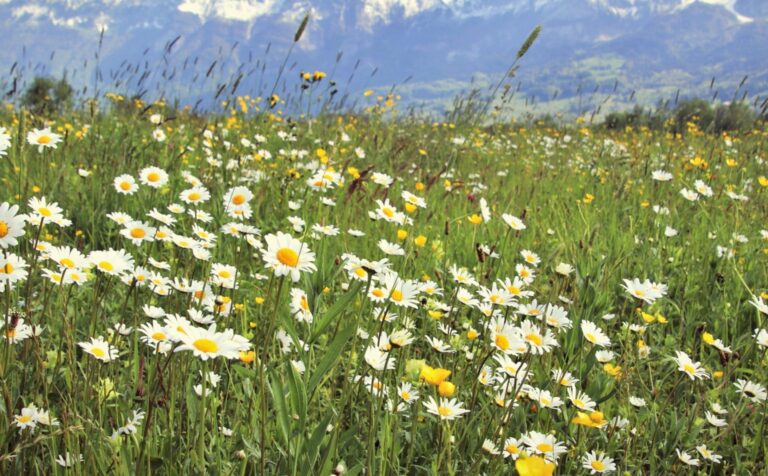
Chamomile tea is brewed using only the flowers, and it is thought to be helpful in promoting relaxation and relieving anxiety. The flowers can also be used to make a sweet syrup that can be added to desserts or used as a natural flavoring for cocktails.
When selecting chamomile flowers for eating, look for those that are fresh and free of any browning or wilting.
The petals can be eaten raw or cooked, and they can also be candied or used to decorate cakes or cupcakes.
30. Borage
Borage, also known as starflower, is an annual herb that produces beautiful blue flowers. The flowers are edible and have a cucumber-like flavor that makes them a popular addition to salads and other dishes.
In addition to their culinary uses, borage flowers are also known for their healing properties.
According to traditional medicine, borage can be used to treat a variety of conditions, including inflammation, anxiety, and depression. Additionally, the plant is rich in vitamins and minerals, making it a valuable source of nutrition.
31. Squash blossoms
The best edible flowers are those that are both safe to eat and add flavor to a dish. While there are many flowers that fit this description, one of the most popular is the squash blossom from vegetable plants like zucchini and summer squash.
Squash blossoms have a delicate flavor that compliments a variety of dishes, and they can be used in both savory and sweet dishes.
When selecting squash blossoms, look for those that are brightly colored and free of blemishes. avoid flowers that have been treated with pesticides.
Squash blossoms can be eaten raw or cooked, and they can be used as a garnish or added to a recipe.
32. Anise hyssop
Anise hyssop (Agastache foeniculum) is a perennial herb in the mint family, Lamiaceae. It is native to North America and it has a long history of use by indigenous people.
The name “anise hyssop” refers to the anise-like flavor of the leaves, which is reminiscent of licorice.
The plant is also known by the common names blue liquorice, blue mint, and false anise. Anise hyssop is a fast-growing plant that reaches a height of 2-3 feet at maturity.
The leaves are lanceolate and have a light green color with a whitish bloom on the surface. The stems are square in shape and the flowers are blue or violet in color.
Anise hyssop blooms from June to September and the flowers are attractive to bees, butterflies, and hummingbirds. All parts of the plant are edible and have a pleasant anise flavor. The leaves can be used fresh or dried in salads, soups, and teas.
The flowers can be used to decorate cakes and desserts. Anise hyssop is easy to grow in most soils and it is drought tolerant once established. It prefers full sun
33. Daisy
Daisies are one of the best edible flowers. They are not only beautiful, but they are also tasty and nutritious. The petals are rich in vitamins and minerals, while the center of the flower is high in fiber.
Daisies can be eaten raw or cooked, making them a versatile addition to any meal. When choosing daisies for eating, look for those that have not been sprayed with pesticides.
Also, be sure to remove the green portion of the flower, as it is bitter.
34. Elderflower
Out of all the edible flowers, elderflower is one of the best. Its delicate floral flavor pairs well with both sweet and savory dishes, and it’s pretty petals can add a touch of elegance to any dish.
Elderflower is also very versatile: it can be used in cocktails, baked into cakes, or even made into jam. If you’re looking for a unique ingredient to take your cooking to the next level, elderflower is a great choice.
35. Lavender
Lavender is a versatile herb that can be used in sweet or savory dishes. Its flowers are also edible, and they make a beautiful garnish for salads, cakes, and other desserts.
When choosing lavender flowers for cooking, make sure to select blooms that have not been treated with pesticides.
Look for flowers that are deep purple in color and have a strong aroma. Avoid any blossoms that look faded or have brown spots.
To use lavender flowers in cooking, simply sprinkle them on top of your dish just before serving. For best results, use freshly picked flowers. Dried lavender can also be used, but it will not have the same flavor or aroma.
36. Saffron
Few flowers are as iconic or as steeped in history as the saffron crocus. native to the Mediterranean, this vibrant purple bloom has been used for centuries as a spice, dye, and medicine.
In the kitchen, saffron adds a unique flavor and aroma to dishes ranging from pella to bouillabaisse.
A single thread of saffron is enough to flavor an entire pot of rice. The vivid crimson hue of saffron also makes it a popular natural dye. Historically, it was used to color cloth and cosmetics, and today it is still used in some paints and inks.
37. Tulip
Tulips are one of the most popular flowers in the world, and they also happen to be edible.
The petals of tulips can be used to add color and flavor to salads, soups, and other dishes. Tulip petals are best when they are still slightly closed, as this is when they are at their most flavorful.
When choosing tulips for cooking, be sure to look for varieties that are listed as being edible, as some tulips contain toxins that can cause stomach upset. When handling tulips, be sure to wear gloves, as the sap can cause irritation.
38. Butterfly pea
The butterfly pea is a twining vine that is native to tropical Asia. The flowers are a beautiful blue color, and they are often used as a natural dye. The flowers can also be eaten, and they have a slightly sweet flavor.
Butterfly peas can be found in Asian markets, or they can be grown at home. When choosing edible flowers, it is important to make sure that they have not been treated with pesticides.
Picking your own flowers from the garden is the best way to ensure that they are safe to eat.
39. Carnations
While carnations are often associated with bouquets and special occasions, these pretty flowers can also be used in the kitchen.
Both the petals and the flower heads of carnations are edible, and they make a beautiful garnish for salads, desserts, and other dishes.
Carnations have a slightly sweet flavor with hints of spice, making them a versatile ingredient that can be used in both sweet and savory dishes. When choosing carnations for cooking, look for blooms that are fresh and brightly colored.
Avoid flowers that have started to wilt or those that have brown spots on the petals. If you are unsure whether a flower is edible, consult a reliable source before using it in your cooking.
40. Chrysanthemum
Chrysanthemums (Chrysanthemum morifolium) are a popular choice for edible flowers, as they have a wide variety of colors and a mild, slightly sweet flavor.
They can be used to decorate cakes and other desserts, added to salads or used as a garnish on main dishes.
Chrysanthemums can also be candied or pickled. When choosing chrysanthemums for eating, look for varieties that are labeled as “edible” or “culinary.”
These varieties have been bred to have a more subtle flavor and are less likely to cause gastrointestinal irritation than other types of chrysanthemums.
As with any flower, it is important to wash chrysanthemums thoroughly before eating them. To remove any remaining pesticides or dirt, soak the flowers in a solution of one part vinegar to 10 parts water for 15 minutes, then rinse well with clean water.
How to Prepare Edible Flowers
For centuries, people have been using flowers as a way to add a touch of beauty to their dishes. Today, edible flowers are becoming increasingly popular as a way to add both flavor and visual appeal to a wide variety of dishes.
While most grocery stores now sell pre-packaged edible flowers, it is also possible to grow your own. Here are a few tips on how to prepare edible flowers:
- Choose fresh, unopened flowers that have been grown without the use of pesticides.
- Rinse the flowers gently with cool water and allow them to drain.
- Cut the stem away from the flower, leaving only the petals.
- Place the petals in a single layer on a paper towel and blot dry.
- Store the prepared flowers in an airtight container in the refrigerator until you are ready to use them.
With these simple tips, you can easily incorporate edible flowers into your cooking. Whether you use them as a garnish or add them to your favorite recipe, they are sure to add both flavor and flair to your dish.
What Flowers to Avoid
There are a number of flowers that you should avoid eating, as they can be toxic. These include daffodils, poppies, foxgloves, oleanders, clematis, bluebells, rhododendrons, larkspurs, hydrangeas and lilies of the valley.
Ingesting any part of these plants can cause vomiting, diarrhea, dizziness, irregular heartbeat and even death. Some can cause extremely low blood pressure.
So, it’s best to err on the side of caution and enjoy flowers only from a distance.
Ready to Plant Some Flowers?
These are just some of many beautiful edible flowers that you can add to your garden and dinner table. Are there any favorites you have that are not listed here?
What edible flowers would you choose from this list? Will you plant these this year? Be sure to pin this for later!
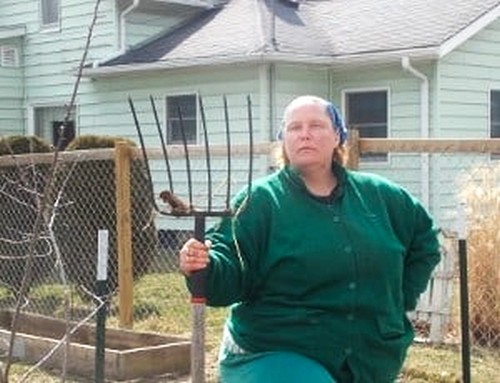
Heather’s homesteading journey started in 2006, with baby steps: first, she got a few raised beds, some chickens, and rabbits. Over the years, she amassed a wealth of homesteading knowledge, knowledge that you can find in the articles of this blog.
Learn more about Heather and the rest of the writers on this page.
